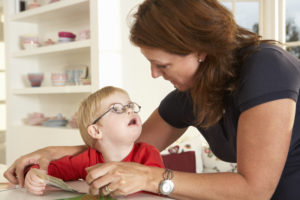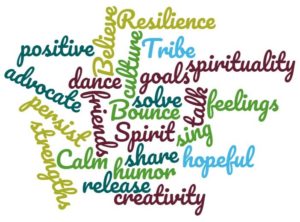INformation Hub
Trauma and Specific Populations
Trauma and Specific Populations
A resource collection compiled by and for Parent Centers.
Coordinated by the Region 2 Parent Technical Assistance Center @ ECAC
September 2018
Trauma affects people differently, and there are different kinds of trauma as well. This web page identifies resources that focus on the impact of trauma on: (a) children and youth with disabilities such as AD/HD, developmental disabilities, or traumatic brain injury; (b) Native American communities; (c) youth; and (d) youth in juvenile justice settings.
- Trauma and Disabilities
- Trauma and Native Americans
- Trauma and Youth
- Trauma and Youth in Juvenile Justice
This web page of resources is one part of the larger Resource Collection on Trauma-Informed Care, a mini-library put together through a collaboration of RPTAC 2 @ ECAC, CPIR, and a review and development team of Parent Center staff.
Back to top
_____________________________________
 Trauma and Disabilities
Trauma and Disabilities
Trauma-Informed Practices: Considerations for the IEP Meeting
While it is important that all families feel a sense of mutual trust and empowerment at the IEP meeting, it becomes even more important when a family has experienced trauma. Here are suggestions to help the IEP team create an environment that supports all attendees at the meeting.
https://www.kennedykrieger.org/stories/trauma-informed-practices-considerations-iep-meeting
Trauma Sensitivity During the IEP Process
From the Federation for Children with Special Needs
This 4-page guide discusses the need for trauma awareness across the span of the IEP process–when sharing information, conducting evaluations, holding IEP meetings, and writing the IEP itself.
http://fcsn.org/rtsc/wp-content/uploads/sites/2/2013/11/Trauma-Sensitivity-During-the-IEP-Process.pdf
Is It AD/HD or Child Traumatic Stress? A Guide for Clinicians
This 2016 fact sheet (11 pages long) provides definitions of child traumatic stress and Attention-Deficit Hyperactivity Disorder (AD/HD) and explains how symptoms can overlap, as well as summarizes some of the differences between the two. The fact sheet describes how child traumatic stress can sometimes be mistaken for AD/HD because of the overlap between AD/HD symptoms and the effects of experiencing trauma. Understanding these differences can help parents and providers assess and treat children appropriately and more effectively.
https://www.nctsn.org/resources/it-adhd-or-child-traumatic-stress-guide-clinicians
Facts on Traumatic Stress and Children with Developmental Disabilities
This 13-page fact sheet provides background on developmental disabilities, statistical information regarding the incidence of trauma for this population, special characteristics of the population that may influence the incidence of trauma, possible reasons for a higher incidence of mental illness for clients with developmental disabilities, suggestions for modifying evaluation and therapy to meet the needs of this population, and suggestions for therapy.
https://www.nctsn.org/resources/facts-traumatic-stress-and-children-developmental-disabilities
The Road to Recovery: Supporting Children with Intellectual and Developmental Disabilities Who Have Experienced Trauma
This package comes from the National Child Traumatic Stress Network. It includes a Facilitator Guide and a Participant Manual that are designed to teach basic knowledge, skills, and values about working with children with IDD who have had traumatic experiences, and how to use this knowledge to support children’s safety, well-being, happiness, and recovery through trauma-informed practice. You may have to create a (free) account to be able to access this learning curriculum.
https://www.nctsn.org/resources/road-recovery-supporting-children-intellectual-and-developmental-disabilities-who-have
Addressing Transition Issues for Young Foster Children
In this archived presentation, also from the National Child Traumatic Stress Network, presenters discuss the many transitions experienced by and the challenges transitions pose for young traumatized children in the child welfare system. Whether responding to the transition from the biological parents’ home to a foster home, from foster home to foster home, or the changes accompanying reunification, those working in the child welfare system will benefit from understanding the effects of these transitions and the appropriate methods for facilitating them. You may have to create a (free) account to view this presentation and discussion.
https://learn.nctsn.org/course/view.php?id=164
Trauma and Native Americans
 Materials from NAPTAC | Let us start with the excellent materials on trauma and on resilience produced by the Native American Parent Technical Assistance Center (NAPTAC) expressly for Parent Centers.
Materials from NAPTAC | Let us start with the excellent materials on trauma and on resilience produced by the Native American Parent Technical Assistance Center (NAPTAC) expressly for Parent Centers.
Reinforcing Resilience: How Parent Centers Can Support American Indian and Alaska Native Parents
This 2-page brief describes the importance of resilience in Native communities and suggests ways that Parent Centers can share the skills that reinforce resilience with Native parents of youth with disabilities.
https://www.parentcenterhub.org/native-resilience-parent-centers/
There’s Also a Brief for Native Youth!
Entitled Bouncing Back from Setbacks: A Message for American Indian and Alaska Native Youth, this 2-pager is written directly to Native youth and begins with the sentence, “This message comes to you from your local Parent Center.” Ready for Parent Centers to connect and share!
https://www.parentcenterhub.org/native-resilience-youth/
You may also wish to consult the resources below, which come from a range of other organizations, all addressing trauma in American Indian/Alaska Native communities.
Addressing Trauma in American Indian and Alaska Native Youth (AI/AN)
Despite the high prevalence of trauma among AI/AN youth, little is known about interventions targeted specifically for this population. To address this information gap, Mathematica Policy Research conducted an environmental scan of practices and programs for addressing trauma and related behavioral health needs in AI/AN youth. This 62-page report describes the interventions identified through the scan and summarize the evidence base for each. (PDF format, 621 KB)
https://www.mathematica-mpr.com/our-publications-and-findings/publications/addressing-trauma-in-american-indian-and-alaska-native-youth
Examining the Theory of Historical Trauma Among Native Americans
This 14-page journal article systematically examines the theoretical underpinnings of historical trauma among Native Americans. The author seeks to add clarity to this theory to assist professional counselors in understanding how traumas that occurred decades ago continue to impact Native American clients today. (PDF, 340 KB)
http://tpcjournal.nbcc.org/wp-content/uploads/2014/01/Brown-Rice-from-TPCjournal-v3i3-Complete-2.pdf
Resources Specific to American Indian/Alaskan Native (AI/AN) Communities
Excellent list of trauma resources and AI/AN populations. From the Administration for Children and Families.
https://www.acf.hhs.gov/trauma-toolkit/american-indian-alaskan-native-communities
Trauma and Youth
What Is Complex Trauma: A Resource Guide for Youth and Those Who Care About Them
This 19-page guide offers information about complex trauma, how it can impact youth, both good and harmful coping strategies, and ways to improve. The guide is for youth who have experienced complex trauma or who know someone who has. Clinicians, caregivers, and other adults can also use the guide to have conversations with youth about what complex trauma is. From the National Center for Child Traumatic Stress.
https://www.nctsn.org/resources/what-complex-trauma-resource-guide-youth-and-those-who-care-about-them
Psychological and Behavioral Impact of Trauma: High School Students
This 2-page fact sheet describe the psychological and behavioral impact of trauma on high school students. Part of the Child Trauma Toolkit for Educators, the fact sheet offers educators, school staff, and parents two short scenarios about the behaviors displayed by two high school students. It also describes behaviors you might observe in adolescents after a trauma, situations that can be traumatic, and when to seek help.
https://www.nctsn.org/resources/psychological-and-behavioral-impact-trauma-high-school-students
 Trauma and Youth in Juvenile Justice
Trauma and Youth in Juvenile Justice
Dual-Status Youth | Identifying Dual Status Youth with Trauma-Related Problems
Dual-status youth are “children and adolescents who are being served by both child welfare and juvenile justice systems.” The question posed and addressed by this 9-page article is: How would a clinician or agency put in place a way to identify dual status youths’ trauma-related needs? The article describes an array of trauma-related screening tools.
https://rfknrcjj.org/wp-content/uploads/2015/12/Identifying-Dual-Status-Youth-with-Trauma-Related-Problems-RFKNRCJJ-Nov2015.pdf
What Trauma-Informed Care Really Means | Webinar
This 90-minute webinar focuses on trauma-informed care in juvenile correctional facilities. From the Council of Juvenile Correctional Administrators (CJCA). CJCA offers many additional webinars and videos on its YouTube channel, so be sure to explore what else is available (e.g., webinars focused on trauma-related training for staff, reducing isolation in youth facilities, and positive youth development, to name a few).
https://youtu.be/P_ESNG0zfZM
Creating Trauma-Informed Care in Juvenile Secure Detention
This 22-slide PowerPoint (in PDF) begins with statistics on the number of youth in juvenile justice seriously affected by traumas they’ve experienced. The slides then describe 4 goals and associated actions for creating trauma-informed care in detection facilities, including training staff; establishing evidence-based, trauma-informed mental health screening procedures; using evidence-based skill groups to reduce trauma-related problems; and building collaborative partnerships across child-serving systems associated with juvenile detention.
http://www.ncsl.org/Documents/CJ/JHavensTraumaInformedCare.pdf
Crossover Youth: A Shared Responsibility
In this 21-page resource, youth who are being served by both child welfare and the juvenile justice system as called crossover youth. These are among the most vulnerable of children. They are more likely to be separated from their families, experience frequent placement changes, suffer behavioral health problems, and have poor educational outcomes when compared with children not in contact with both systems. While the data presented are primarily for California, there are examples of policies and practices that other states can adopt or adapt.
http://co-invest.exedor.us/wp-content/uploads/insights_volume10-1.pdf
Center for Juvenile Justice Reform | Website
If your Parent Center works with youth involved in the juvenile justice system, then you probably already know about the Center for Juvenile Justice Reform. The Center works with jurisdictions nationwide to help them better translate knowledge on “what works” into everyday practice and policy. The Center offers numerous “practice models” for states and communities to use to improve their juvenile justice systems. These include: (a) Crossover Youth Practice Model(CYPM), to address the unique needs of youth that are at risk of or are fluctuating between the child welfare and juvenile justice systems; (b) Youth in Custody Practice Model, to assist agencies in implementing a comprehensive and effective service delivery approach; and (c) Stop Solitary for Kids, a national campaign to end solitary confinement of youth in juvenile and adult facilities in the United States.
http://cjjr.georgetown.edu/
Which part of this Resource Collection would you like to visit now?
Return to the Resource Collection landing page
Resource Collection | Basic Information about Trauma
Resource Collection | What is Trauma-Informed Care?
Resource Collection | Trauma and Specific Populations (you’re here already)
Resource Collection | Building Trauma-Informed Schools
Resource Collection | Responding to Disasters
SOURCE ARTICLE: Center for Parent Information and Resources
Give us a call at (727) 523-1130 or (800) 825-5736 or request a callback by clicking below.
